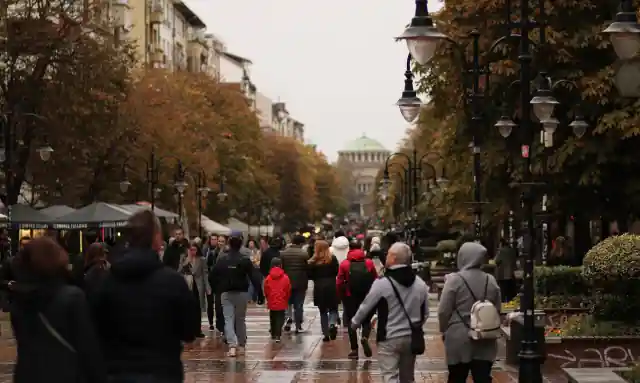
In a landscape of shifting demographics, Bulgaria finds itself at a crossroads where urban centers burgeon while rural villages dwindle.
The latest data released by the National Statistical Institute unveils a nuanced tale of population dynamics, highlighting both growth and decline across the nation’s cities, towns, and villages.
Urban Resurgence
At the forefront of this narrative are Bulgaria’s urban centers, notably Sofia, Plovdiv, and Varna, which have witnessed a significant influx of residents over the past year.
With Sofia leading the charge, boasting an increase of 6,550 inhabitants, the capital now hosts a population of 1,196,806. Plovdiv and Varna follow suit, with jumps of 3,661 and 3,514 individuals, respectively.
Notably, it’s not just the major cities experiencing growth. Nessebar and Sveti Vlas also saw their populations swell, each gaining over a thousand residents.
This urban resurgence extends to smaller municipalities like Pomorie, Kardzhali, Rakitovo, and Bansko, where population spikes of several hundred were recorded.
Rural Exodus
Conversely, Bulgaria’s rural areas continue to grapple with depopulation, with smaller towns and villages bearing the brunt of this trend.
The data underscores a stark reality: out of the 257 cities and towns surveyed, only 46 experienced population growth. The remaining 211 witnessed declines of varying degrees.
In particular, the plight of villages with populations under 1,000 is evident. Towns like Melnik, Antonovo, and Boboshevo saw their numbers dwindle, reflecting a broader pattern of rural exodus.
This trend is further underscored by the fact that 201 settlements in Bulgaria are now devoid of any residents.
Regional Disparities
Regional centers, traditionally viewed as hubs of activity and growth, also face demographic challenges.
While Varna, Veliko Tarnovo, Kardzhali, Plovdiv, and Sofia bucked the trend with population increases, others experienced declines. Notably, Vidin, Vratsa, Dobrich, Montana, Pleven, and Ruse saw decreases of over 1,000 residents each.
Moreover, smaller regional centers like Yambol, Haskovo, Sliven, and Pernik also grappled with significant population declines, signaling a broader pattern of urban migration.
Gender Dynamics
An intriguing aspect of Bulgaria’s demographic landscape lies in its gender dynamics. Data reveals that in 20 cities, including Alfatar, Zemen, and Melnik, men outnumber women. Conversely, only two cities—Beloslav and Pliska—boast an equal gender ratio, signaling a unique demographic balance.
Path Forward
As Bulgaria navigates these demographic shifts, policymakers face the daunting task of balancing urban growth with rural sustainability.
Initiatives aimed at revitalizing rural areas, promoting job creation, and improving infrastructure are imperative to stem the tide of depopulation.
Additionally, efforts to foster gender equality and create inclusive communities will be vital in ensuring the nation’s long-term prosperity.
In conclusion, Bulgaria’s demographic landscape reflects a multifaceted reality characterized by urban resurgence, rural decline, and regional disparities.
By addressing these challenges head-on and implementing strategic interventions, Bulgaria can chart a path toward a more balanced and resilient future.
This article was created using automation and was thoroughly edited and fact-checked by one of our staff editorial members
